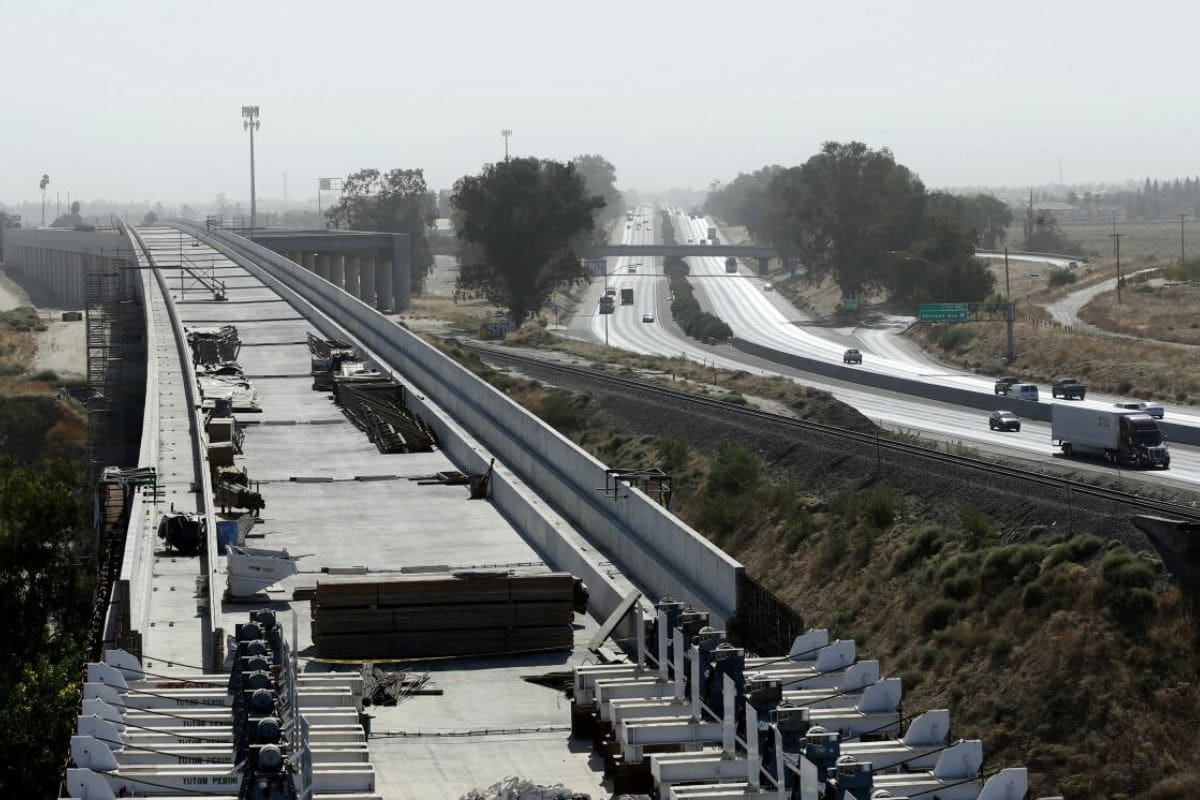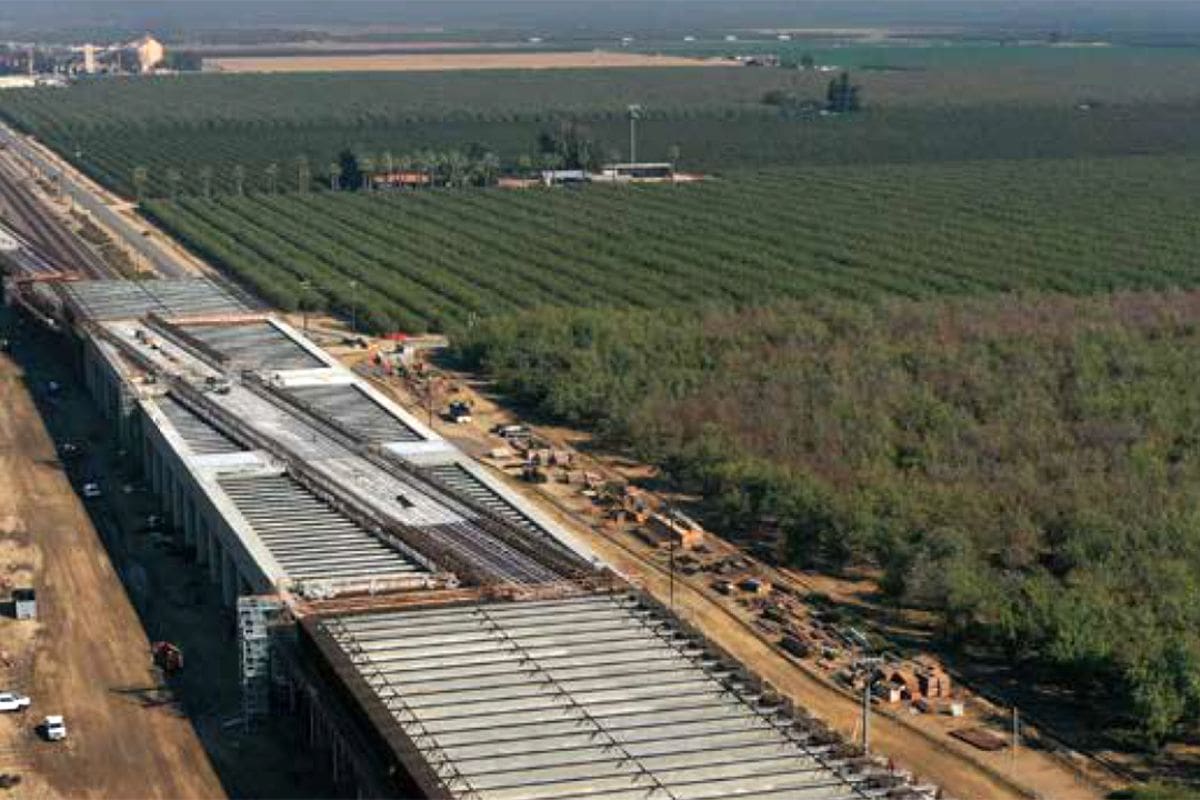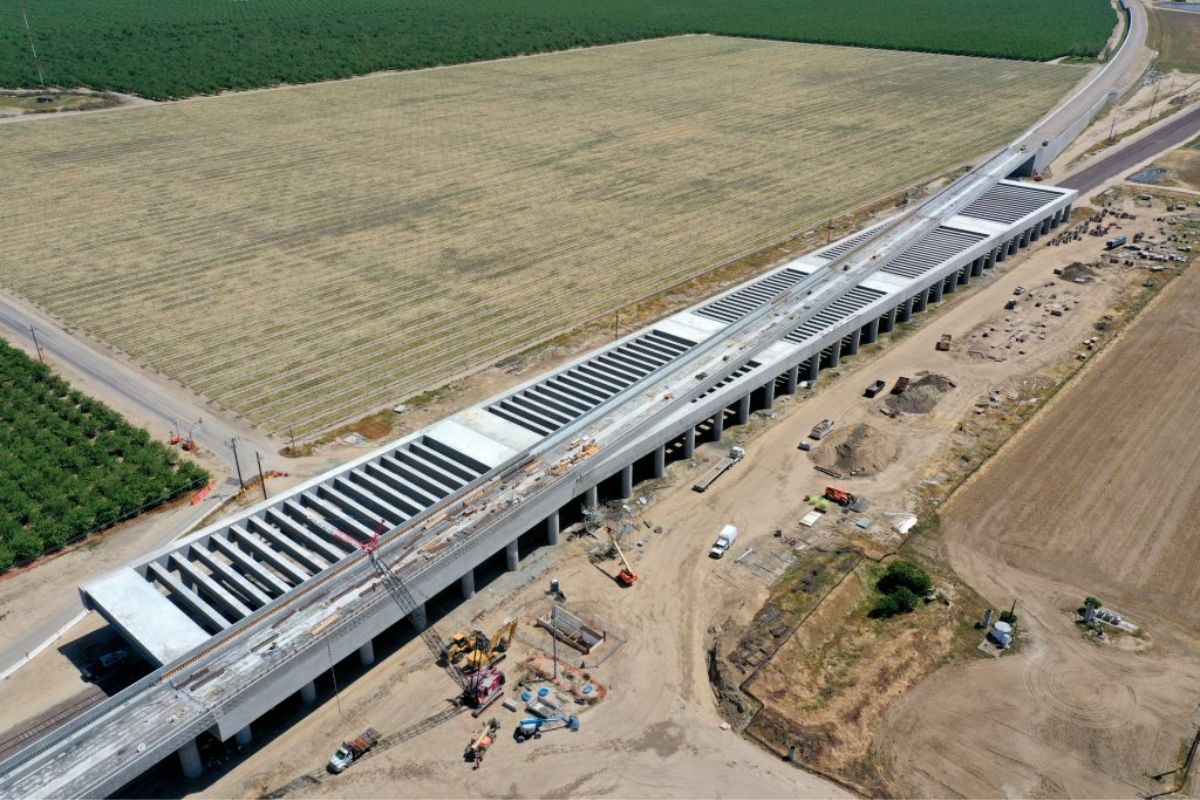California High Speed Rail: The California High-Speed Rail project has been a focal point of infrastructure development in the state, aiming to revolutionize travel and connectivity.
However, navigating funding and construction hurdles has proven to be a complex challenge. As stakeholders grapple with financial uncertainties and logistical obstacles, the future of this ambitious endeavor hangs in the balance.
Let’s explore the intricacies of funding sources, construction and the potential impact on California’s transportation landscape.

California High-Speed Rail Funding and Development
California High-Speed Rail Funding and Development has seen a significant boost with President Joe Biden’s announcement of £6.5bn ($8.2bn) in funding for ten US rail projects, of which £2.4bn has been allocated to the California High-Speed Rail (CHSR) project managed by the California High-Speed Rail Authority (CHSRA).
This injection of funds marks a crucial step forward in advancing the ambitious CHSR project, which aims to construct a 1,287km passenger line connecting major cities in the state. The allocation underscores the federal government’s commitment to enhancing transportation infrastructure and promoting sustainable travel options.
With this substantial financial support, the CHSR project is poised to make significant strides towards its goal of revolutionizing rail travel in California. The funding not only accelerates the development of the high-speed rail network but also signals a broader push towards modernizing transportation systems to meet the evolving needs of the population.
This investment lays a solid foundation for the project’s future growth and sets the stage for a more connected and efficient rail system in the region.
California High-Speed Rail Project Overview
The California High-Speed Rail project, a monumental endeavor aimed at revolutionizing transportation infrastructure, is strategically divided into two phases to connect major cities across the state. Phase 1 covers 837km, linking cities from Anaheim to San Francisco, with Phase 2 further extending the line to Sacramento and San Diego.
To facilitate efficient construction and management, the California High-Speed Rail Authority (CHSRA) has divided Phase 1 into three sections. Currently, construction efforts are concentrated on the 275km Central Valley segment, showcasing progress towards the project’s ultimate goal of a comprehensive high-speed rail network in California.
This strategic division allows for focused development, addressing critical connectivity needs in distinct stages. By breaking down the project into manageable sections, the CHSRA aims to streamline operations and ensure the successful implementation of this transformative infrastructure initiative, catering to the diverse transportation demands of the state’s residents and visitors.

Historical Perspective and Project Milestones
Reflecting on the origins of the high-speed rail concept in California, one is drawn back to the transportation landscape of the 1980s and the subsequent momentum gained in the 1990s, leading to the establishment of the California High-Speed Rail Authority in 1996.
The journey of California’s high-speed rail project has seen significant milestones, shaping its trajectory:
- Establishment of CHSRA: The pivotal moment in 1996 marked the creation of the California High-Speed Rail Authority, laying the groundwork for the ambitious high-speed rail vision.
- Proposition 1A Approval: In November 2008, voters passed Proposition 1A, endorsing a substantial £7.8 billion in bonds dedicated to the planning and construction of the high-speed rail project, solidifying public support and funding.
- Momentum and Progress: Over the years, the project has made strides in planning, securing funding, and advancing construction, underscoring the commitment to revolutionizing transportation infrastructure in California.
Construction Progress and Challenges
Navigating the construction progress and challenges of the California High-Speed Rail project provides valuable insights for stakeholders involved in large-scale infrastructure development. Currently, construction is underway for the 191.5km Central Valley section, which is part of three construction packages: CP1, CP2-3, and CP4. Despite progress in construction, securing funding remains a significant challenge for the project.
The California High-Speed Rail project heavily relies on grants and allocations from state and federal sources, including the California Cap-and-Trade Program. This reliance on external funding sources introduces complexities and uncertainties that need to be carefully managed to ensure the successful completion of the project. Stakeholders must navigate these construction challenges diligently to ensure the project’s long-term success and viability.
Best For: Small to medium-sized construction companies looking to gain experience and expertise in large-scale infrastructure projects.
Pros:
- Opportunity to be involved in a high-profile and significant infrastructure project.
- Access to state and federal funding sources, including the California Cap-and-Trade Program.
- Valuable insights and experience gained from navigating complex construction challenges.
- Uncertainties related to securing ongoing funding for the project.
Future Plans and Vision for High-Speed Rail
As the California High-Speed Rail project progresses through construction milestones and funding challenges, the vision for its future expansion and impact on transportation infrastructure becomes increasingly pivotal.
The future plans and vision for the high-speed rail project are as follows:
- Completion of Construction Phases: The project aims to finalize Construction Packages (CP) 2-3 and CP1 by 2026, with 16 structures already completed in CP4. The completion of these phases is crucial for the overall advancement of the high-speed rail network.
- Testing and Service Initiation: In line with the project timeline, the California High-Speed Rail Authority (CHSRA) targets the commencement of train testing between Madera and Poplar Avenue by 2028. Additionally, the plan includes the initiation of high-speed rail passenger services between Merced and Bakersfield by the years 2030-2033.
- Expansion and Connectivity: Beyond the initial routes, the vision for the high-speed rail includes expanding the network to connect major cities across California, enhancing regional mobility, and reducing travel times between key destinations. This expansion is expected to revolutionize the state’s transportation infrastructure and provide efficient, sustainable travel options for residents and visitors alike.

Also Read: Advancing AI in Public Services Home Secretary James Cleverly California Expedition
New In Brief
California’s High-Speed Rail project faces intricate challenges in funding and construction, despite a boost from President Biden’s £2.4bn allocation. Divided into phases, with a focus on the 275km Central Valley segment, the project aims to connect major cities. Propelled by historical milestones, such as Proposition 1A in 2008, the initiative grapples with funding uncertainties while relying on grants and the California Cap-and-Trade Program. Future plans include completing construction phases by 2026, initiating testing by 2028, and offering high-speed rail services between Merced and Bakersfield by 2030-2033. The ultimate vision involves expanding the network, revolutionizing transportation infrastructure across California.
Our Reader’s Queries
What is the new funding for California high-speed rail?
President Biden’s historic Infrastructure Investment and Jobs Act allocates the California High-Speed Rail Authority a record-breaking $3.1 billion grant, the program’s largest. This funding milestone, part of the broader $3.5 trillion investment, underscores the commitment to advancing high-speed rail. With a track record of generating 12,000 union jobs, the initiative not only propels the rail project forward but also aligns with goals of affordable and eco-friendly transportation solutions for the state.
Is California high-speed rail still under construction?
Initiated in 2015, construction in the Central Valley has progressed significantly, with 171 miles (275 km) of the route currently at different stages of completion. As of late 2023, an average of 1,500 workers were actively engaged in daily construction activities on California High-Speed Rail (CAHSR) sites, solidifying its status as the largest construction project in the United States.
Why is it taking longer to build the high-speed rail in California?
In 2008, California approved the construction of the country’s inaugural high-speed railway, envisioning an electric train linking Los Angeles and San Francisco in two hours and forty minutes. However, after 15 years, not a single mile of track has been laid, and insufficient funds pose a challenge to completing the project.

